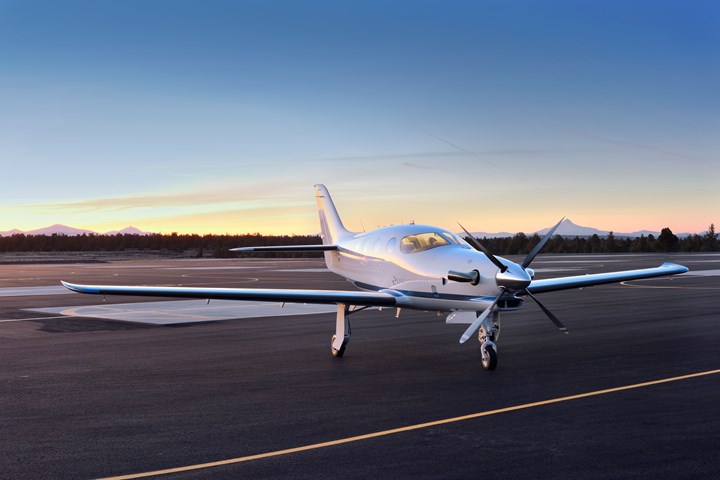Epic delivers first all-carbon fiber E1000 aircraft
Epic Aircraft delivers a composite, single-engine turboprop aircraft to customers despite recent pandemic-related setbacks.

Source | Epic Aircraft
Private aviation company (Bend, Oreg., U.S.), confirmed on May 28 the completed delivery of its first two all-composite, single-engine turboprop E1000 aircraft, following the successful conclusion of the plane’s FAA Type Certification program last year (see sidebar).
Powered by the Pratt & Whitney 1200-horsepower PT6A-67A engine, the all-carbon fiber E1000 cruises at more than 330 knots, climbs at 4,000 feet per minute and is RVSM (reduced vertical separation minimum) certified to 34,000 feet. Offering a full-fuel payload of nearly 1,100 pounds, Epic’s aircraft can cover U.S. coast-to-coast travel with one fuel stop.
“Seeing the enthusiasm of our Epic E1000 owners as they take delivery is gratifying. This is the successful culmination of eight years of hard work, extensive investment and a passionate belief in our product,” says Epic CEO, Doug King.
Despite recent pandemic-related setbacks, Epic operations are returning to full capacity and the company intends to ramp customer deliveries as quickly as possible.
Related Content
-
Development of a composite liquid hydrogen tank for commercial aircraft
Netherlands consortium advances cryogenic composites testing, tank designs and manufacturing including AFP, hybrid winding, welding of tank components and integrated SHM and H2 sensors for demonstrators in 2025.
-
Infinite Composites: Type V tanks for space, hydrogen, automotive and more
After a decade of proving its linerless, weight-saving composite tanks with NASA and more than 30 aerospace companies, this CryoSphere pioneer is scaling for growth in commercial space and sustainable transportation on Earth.
-
The next-generation single-aisle: Implications for the composites industry
While the world continues to wait for new single-aisle program announcements from Airbus and Boeing, it’s clear composites will play a role in their fabrication. But in what ways, and what capacity?



